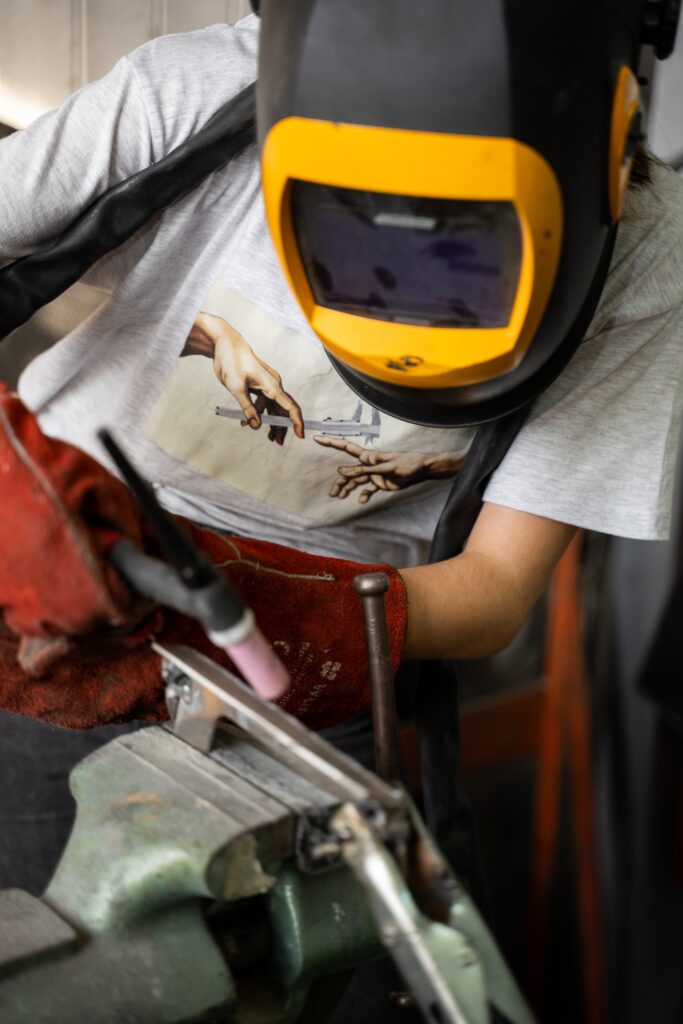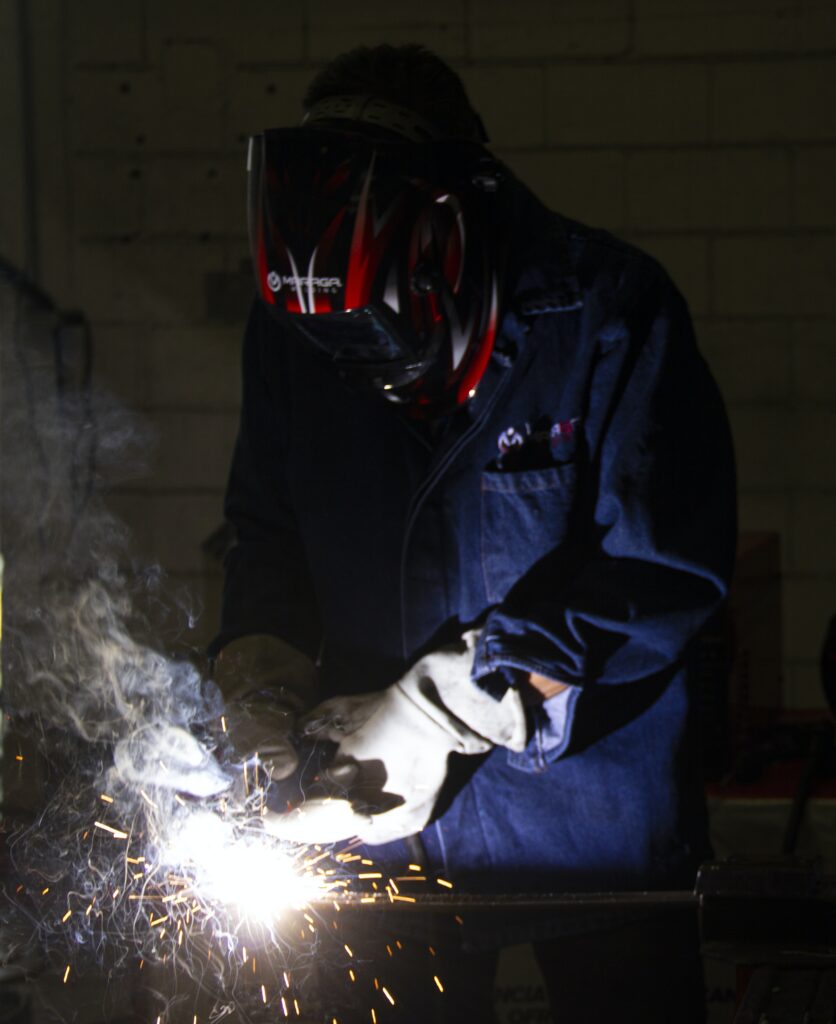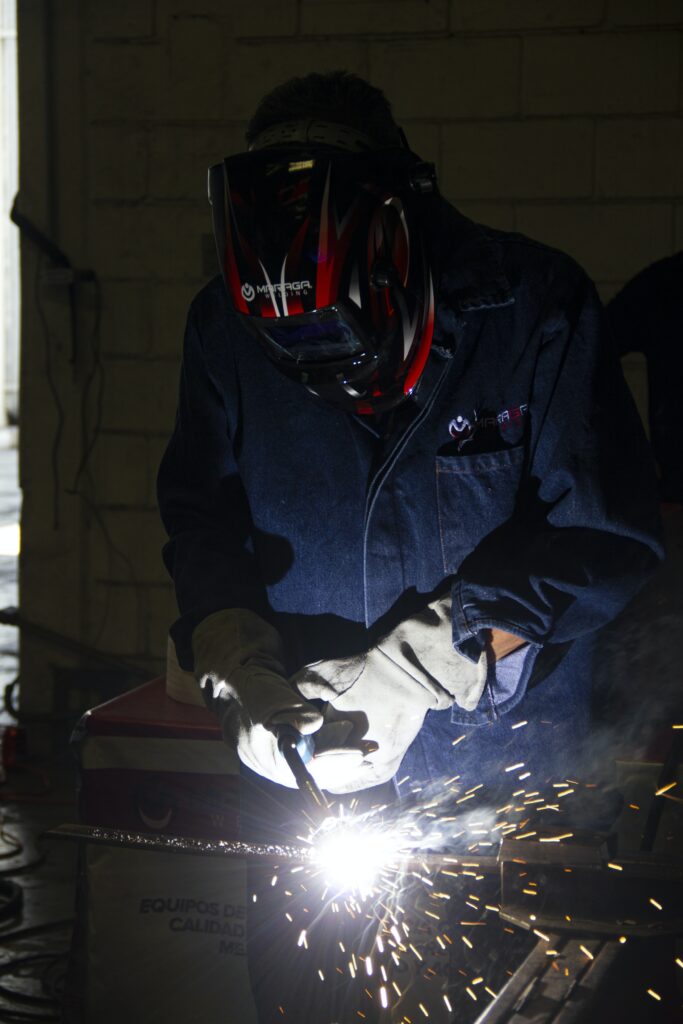Ever wondered about the ins and outs of becoming a professional welder? This won’t stay as a wonder anymore! In the article, “What Is A Welding Apprenticeship,” you’ll embark on an enlightening journey. It’s about understanding the fundamentals of welding apprenticeships – exciting right? As you immerse yourself in the captivating world of welding, you’re certain to gain insights into the comprehensive pathway to proficiency in this core industrial profession. From knowing the initial training to grasping the importance of hands-on experience, it’s all about empowering you with valuable knowledge!
Definition of a Welding Apprenticeship
Contrary to common belief, some professions are not learned purely in classrooms. This is where apprenticeships come in.
Meaning of an apprenticeship
An apprenticeship is essentially a program that combines on-the-job training with classroom education. It offers learners the chance to gain practical experience in their chosen field while also advancing their theoretical knowledge. Apprenticeships are used in various trade and technical fields, including but not limited to carpentry, plumbing, and in this case, welding.
Specifics of a welding apprenticeship
A welding apprenticeship, to be more specific, is a structured training program that allows you to learn the art and science of welding while working under the supervision of experienced welders. As an apprentice, you get to apply your theoretical knowledge in real-life situations, allowing you to build essential practical skills. Ultimately, you become equipped with the skills, knowledge, and experience to become a professional welder.
Understanding the Welding Industry
Before embarking on a welding apprenticeship, it helps to thoroughly understand the industry you are getting into.
Overview of the welding industry
The welding industry is a vital component of a number of sectors, including manufacturing, construction, and automotive repair. It involves the use of heat to fuse different forms of metal together, making it an essential process in several areas of production.
Main sectors of the welding industry
The main sectors where welding is employed include the shipbuilding industry, automobile industry, infrastructure and construction industry, and pipeline manufacturing, among others. Welders are crucial in the production process, from creating intricate parts to the assembly of large structures.
Career prospects in the welding industry
Career prospects in the welding industry are quite promising. According to the Bureau of Labor Statistics, demand for welders is expected to grow over the next decade. Welders can find job opportunities in various sectors such as construction, manufacturing, utilities, and even space travel.

The Importance of Welding Apprenticeships
So, how important is a welding apprenticeship? Let’s delve into the benefits.
Bridging the skills gap
As technology advances, it’s essential for the welding industry to keep up, and apprenticeships can help bridge this skills gap. They provide a platform for knowledge and skills transmission from experienced workers to newcomers, ensuring that important industry skills do not die out.
Practical learning experience
Unlike a traditional classroom setting, apprenticeships offer practical learning experience, which is vital in a hands-on field like welding. As an apprentice, you will gain firsthand experience working with different types of metals and welding equipment.
Career growth opportunities through apprenticeships
Apprenticeships also provide substantial career growth opportunities. After completing an apprenticeship, you become a certified welder, opening doors to different job opportunities at higher levels in the industry.
Requirements for a Welding Apprenticeship
Before you can start a welding apprenticeship, there are a few basic requirements you need to meet.
Academic qualifications
Most welding apprenticeship programs require you to have a high school diploma or equivalent. You need to have a good grasp of basic math and science concepts, especially physics.
Practical skills needed
As for practical skills, you’ll need good manual dexterity, hand-eye coordination, and physical stamina because welding is a physically demanding job. You have to handle different types of tools and work in various positions.
Personal traits and qualities
Lastly, personal traits such as attention to detail, problem-solving ability, and a strong work ethic are highly valued. Patience and perseverance are also crucial as the work can sometimes be painstaking and slow.

Welding Apprenticeship Duties and Responsibilities
As a welding apprentice, your duties and responsibilities vary, but they generally revolve around learning and applying welding techniques.
On-the-job training
This is where you get to learn from professional welders firsthand. You will observe and assist them in their day-to-day work, gradually taking on more responsibilities as your skills improve.
Supervised practice
During supervised practice, you get to apply what you’ve been taught under the watchful eye of an experienced welder. This helps to ensure that you’re learning the correct procedures and safety measures.
Warehousing and equipment maintenance
Your duties will also likely include warehousing and equipment maintenance tasks. You’ll learn how to store welding materials properly and maintain welding equipment, which are all crucial aspects of the trade.
Steps to Become a Welding Apprentice
Dreaming of becoming a welding apprentice? Here are the steps to get you on your way.
Finding apprenticeship opportunities
First, you need to find available welding apprenticeship opportunities. Local trade schools, community colleges, and labor unions are good places to start your search.
Application process
Once you’ve found a suitable apprenticeship program, the next step is to apply. The application process usually involves submitting certain documents, such as your high school transcript, and taking a basic skills test.
Interview and selection process
After submitting your application, you would then go through an interview process where potential employers assess your suitability for the apprenticeship. If you pass the interview, you will then be selected to join the apprenticeship program.

Learning Outcomes of a Welding Apprenticeship
Now, what can you expect to gain from a welding apprenticeship?
Skills acquired
Firstly, you will acquire practical welding skills. You will learn how to use various welding tools and techniques to join different types of metals.
Work experience gained
On top of the skills, you also gain invaluable work experience. This includes understanding workplace dynamics and learning how to handle real-life welding challenges.
Knowledge on safety norms and regulations
Moreover, you will learn about safety norms and regulations in the welding industry. You get to understand how to protect yourself and others while carrying out welding tasks.
The Structure of a Welding Apprenticeship Program
If you are curious about what a welding apprenticeship program looks like, here’s an overview.
Length of the apprenticeship
Most welding apprenticeships last between three to five years. During this time, you work under experienced welders while also taking theoretical classes to complement your practical training.
Balance of theory and practical work
A good welding apprenticeship program strikes a balance between theory and practical work. You get the chance to apply the theoretical concepts learned in class in real-life welding scenarios.
Mentorship and supervision details
In such programs, a professional welder mentors you. They provide individualized instruction and constructive feedback, and they ensure that you are acquiring the right skills and following safety practices.
Advancement Opportunities after a Welding Apprenticeship
So what’s next after a welding apprenticeship?
Potential job roles
After completing your apprenticeship, you can assume various job roles such as journeyman welder, welding supervisor, welding inspector, and more.
Continued learning opportunities
Continued learning opportunities also abound. You can choose to specialize in a certain area, like underwater welding or robotic welding, or even further your education to increase your earning potential and job prospects.
Potential income and benefits
Finally, the income and benefits. Experienced, skilled welders often earn an attractive wage, and benefits like healthcare and retirement contributions can add to your overall compensation package.
Challenges and Rewards of a Welding Apprenticeship
Lastly, let’s touch on the challenges and rewards you may encounter during your welding apprenticeship journey.
Difficulties faced during apprenticeship
Indeed, a welding apprenticeship comes with its own hurdles. Adjusting to the physical demands and long hours can be challenging. Learning new and complex techniques may sometimes be overwhelming, too.
Intrinsic and tangible rewards
However, the rewards make it worth the while. The sense of accomplishment when you successfully complete a welding project is gratifying. Plus, the opportunity to earn while you learn is a notable benefit.
Preparedness for the future
Most importantly, a welding apprenticeship prepares you for a promising future in the welding industry. Be it in job security, career satisfaction, or financial stability, the welding industry can offer all these and more.
So there you have it, an overview of a welding apprenticeship. Now, you have a clearer picture of what to expect if you decide to embark on this career path. As with any journey, there may be challenges, but the rewards are definitely worth the effort.
